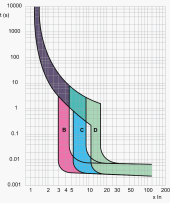On average it is drawing 60-70 amps. But in short bursts of 1 or 2 seconds, so its hard to get an accurate reading in such a short time. Any ideas?
I have 2x 100ah Battleborns sitting in my shop, but I didn't want to have more parts to the system, I wanted it as simple as possible. I even went back and forth with Battleborn on how to keep the battery from being damaged and they basically told me to buy a battery charger and leave it on 24/7. Again, I wanted less equipment/things to go wrong.
I bought a 100a model from Daygreen, which is 30% larger than the load i have.
I am going to have to try the heavier gauge wire, the hard part about it is the terminals are small, and most cable lugs are too large to fit! I can try and add a 10ga lead and see if it gets better.
I was hoping the converter would have a regulated output that would maintain 12v irregardless of 1 amp draw or 100 amp draw. But with it dropping down to 10v or less, its not very usable.
A suitable sized cap on the output side of the DC to DC might help as well to absorb the peak current draw and keep the DC to DC voltage from sagging which is likely what's throwing the error.
I'd try this and if it doesn't work return it.....
Amazon.com: 5.0 Farad Digital Power Capacitor - High-Performance Car Audio Accessory with Blue Digital Display, Voltage Readout, Over Voltage Protection, Mounting Hardware, DC 12-24V - Pyle PLCAPE50: Car Electronics
Buy 5.0 Farad Digital Power Capacitor - High-Performance Car Audio Accessory with Blue Digital Display, Voltage Readout, Over Voltage Protection, Mounting Hardware, DC 12-24V - Pyle PLCAPE50: Capacitors - Amazon.com ✓ FREE DELIVERY possible on eligible purchases
www.amazon.com
Also ensure the wire size on the 12V side is adequate as you have been spoilt by tiny wires on the 48V side



